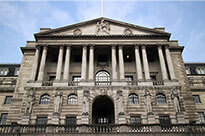3rd February 2016
7mins
Buy-to-let is dead – long live buy-to-let?

Rents have risen a total of 19% over the last four years, and Knight Frank forecasts cumulative rental growth of 15.4% in London by the end of 2020, and 11.9% in the rest of the country. By that date, investors expect gross yields to settle at around 4.75% in London, and 6% in the regions.
These sorts of returns are attractive to investors given current low interest rates – which the Governor of the Bank of England is in no mood to hike any time soon – and highly volatile equity markets.
Certainly, the recent increases in stamp duty and the planned reduction in mortgage interest tax relief will likely see institutional investors or wealthier high-net worths rather than individual investors provide much of the capital needed, and this is an area in which we are expanding our offering at Black Brick. But we also expect individual investors to remain active in this part of the market.
“We continue to see some clients shrugging off the three percentage point rise in stamp duty as simply part of the cost of acquisition,” says Caspar Harvard-Walls, Black Brick Partner. “Rising rents will also go some way offset these additional costs. The fact of the matter is that London remains an attractive city in which to invest, and that isn’t likely to change.”
Keeping a closer eye on what tenants want

Take Embassy Gardens, the development in Nine Elms, Vauxhall, next to the new US embassy. It offers its “show-stopping” Sky Pool, as well as membership of Eg:le Club, which offers leisure, business and fitness facilities. With studio apartments changing hands for below £500,000, access to such facilities is no longer the preserve of millionaires.
Generally speaking, however, landlords will need to ensure that their properties will work as hard for them as possible. Through our Property Management Service, we can offer advice on the best letting agents, provide independent rental valuations, and work with our network of designers and tradesmen to ensure the property is kept in the optimum condition to maximise rental yields. While the service was designed with offshore landlords in mind, it is also proving popular among time-poor UK-based investors and those who want professional support in managing their investments.
Signs of life in the sales market?

It also found that sales of £2 million-plus prime country house properties in the last quarter of 2015 were up 15% on the previous three months, and more than double the number in Q1.
For owner-occupiers trading up from London, buying in the country offers much more space and a better quality of life. Our recent acquisition in Kent for a British client is a good example. We sourced a 7,100 sq ft period property, set in a four-acre estate, with its own swimming pool and tennis court – paying just £242/sq ft – a fraction of prices in the capital.
We also see opportunities for owner-occupiers looking to buy at the luxury end of the Surrey market in the golden golfing estates of Wentworth and St George’s Hill. In the past, developers here have tapped into demand from wealthy foreigners. But the fall in overseas interest – particularly from Russian buyers – and an oversupply of stock means bargains are to be had.
Acquisition of the month- Ambrose House

Our client paid around £1,500/square foot – significantly below the £1,800 level that units have sold for recently. Luxury riverside developments with access to shops and leisure facilities command a premium, and we expect this phase of the development to be highly sought after once completed.
We would be delighted to hear from you to discuss your own property requirements. For a non-obligatory consultation, please contact us.